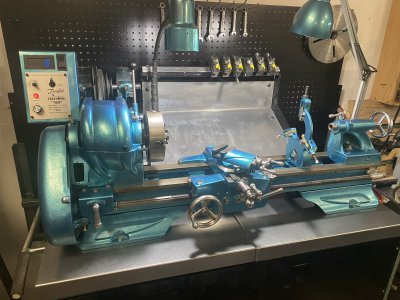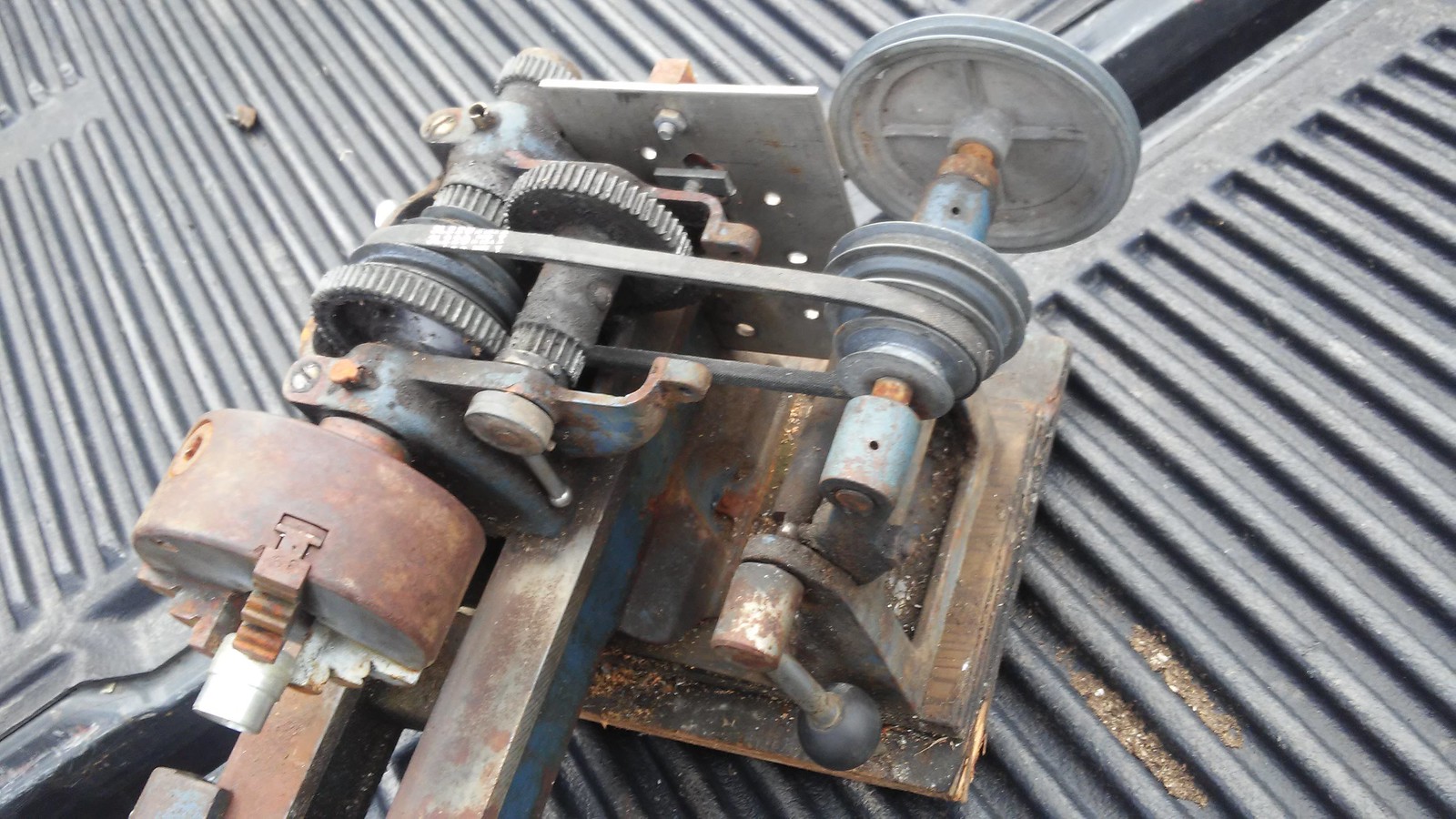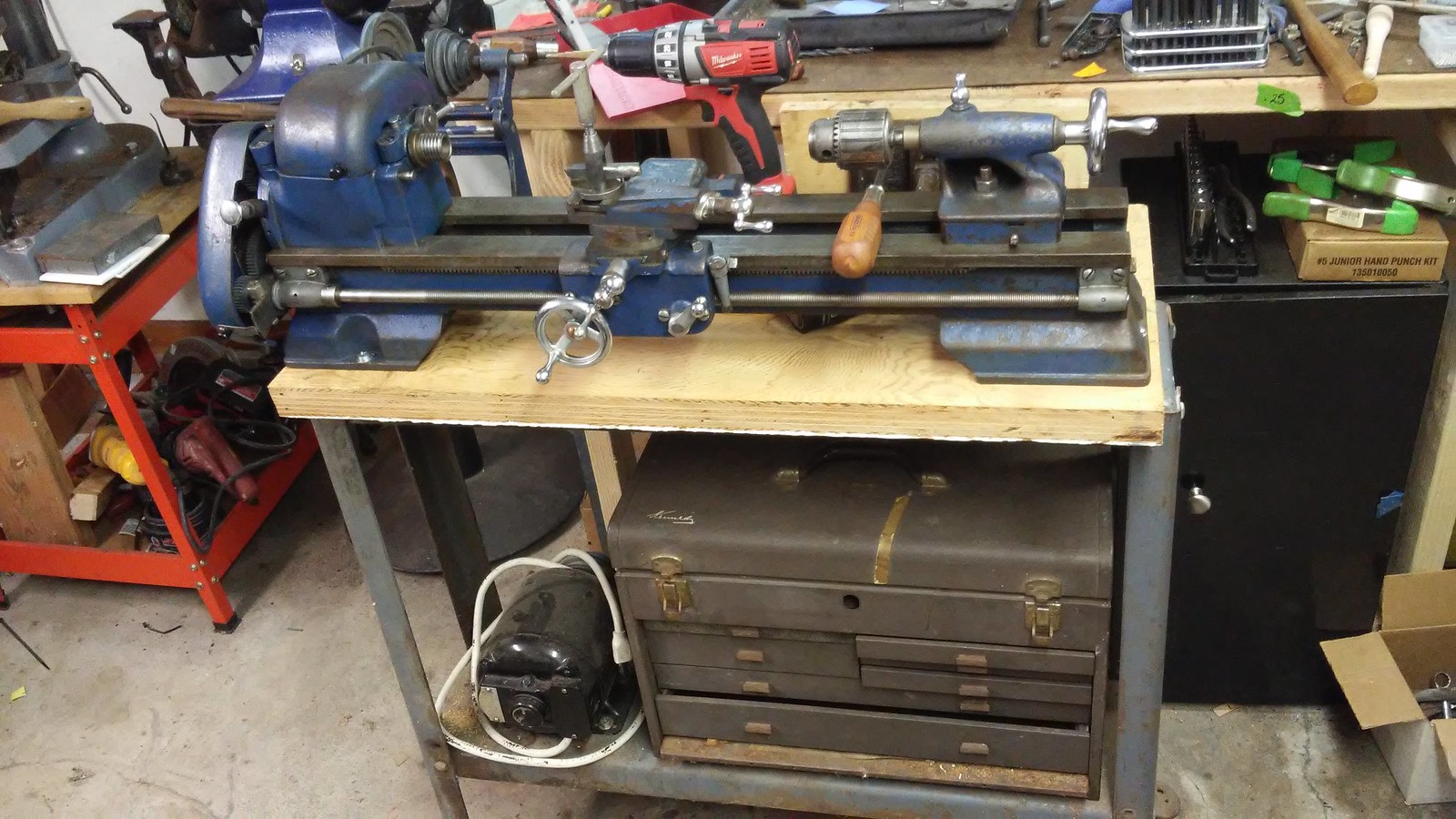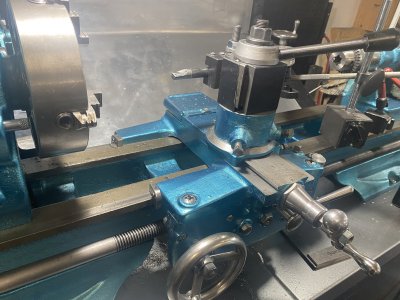Old Atlas lathes are a rabbit hole for sure. Here’s how my Atlas 10” ended up:
View attachment 458618
Full tear down and rebuild. Color was chosen simply because I like it. Spray can, Rustoleum metallic turquoise. Dc motor conversion with variable speed control and jog. I do have a reverse switch on it, but don’t use it often because its a thread on chuck.
I don’t even want to think about how much time and money I have in it, but its just about perfect now for the tasks I need done. I probably could have bought a new import lathe for the same money, but this one has a bit of me in it after all the work and its always a conversation starter when someone drops by the shop. I really like the hints of “art-deco” styling in the castings and the way the paint accentuates the curves and shapes.
I just make things at home for myself (mainly car hobby stuff) so I don’t need a big 2,000 lb monster taking up too much space in my small shop.
Not in the pic is the solid plinth I made to replace the top compound. That was the biggests improvement (short of the dc motor) I made to the lathe. It made the whole process much more rigid and is one of the reasons I can part on this “little” lathe without chatter. trying to part with the top compound installed is a nightmare. I only install the top compound when I need it to perform a specific operation I can’t do with a solid plinth to hold my AXA QCTP.
Was a lot of work, but its in great shape now. I used it for a couple years just replacing worn parts as I went along before the full tear down and rebuild.
I have a 3d printer and printed some 3d ABS change gears for it. They work fine and even helped quiet down the gear train “ringing”. I would recommend them. I downloaded the 3d print files from thingiverse.com
I also have an original Atlas milling attachment. Ulmadoc on this forum sold it to me many years ago at a very reasonable price. It was useful before I bought a benchtop mill as it gave me some extended capabilities. But it was limited to small work or things like making key slots. I haven’t even installed it since buying the benchtop mill. I’ll probably strip it down and paint it like the rest of the lathe because it sits on the same bench behind the lathe and its mostly just for looks now.
But if you don’t have a mill or don’t plan to buy one in the near future, a milling attachment can be useful. Its just very limited in what it can accomplish.
The original Atlas ones seem to go for stupid money these days. Unless you run across a screaming deal, save your money for a mill further down the road and use the wait time to get some experience running that lathe. That experience will also serve you well if you do buy a mill later down the road.





